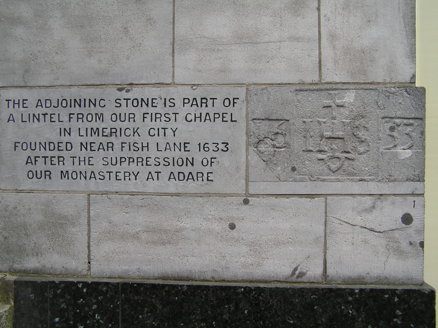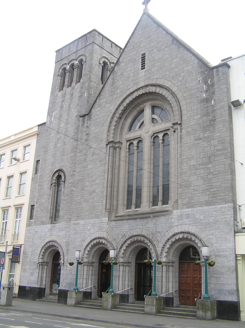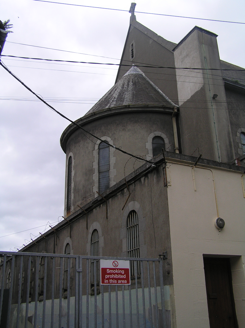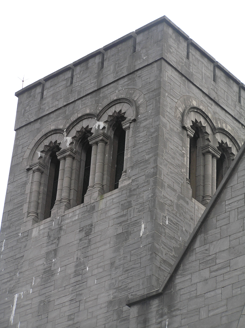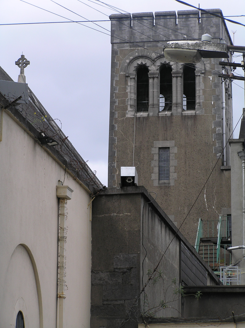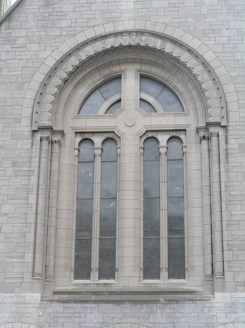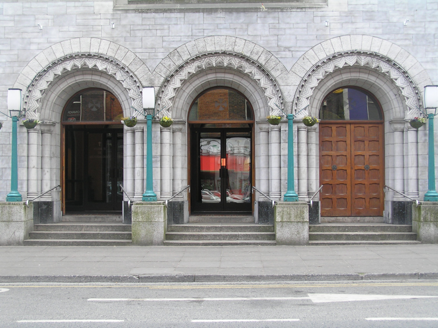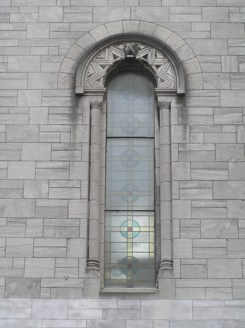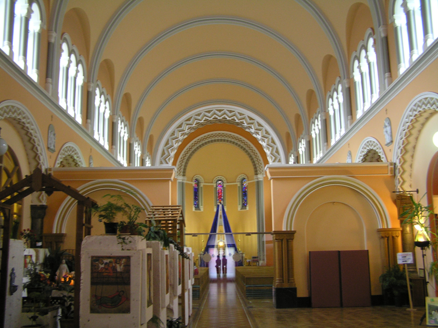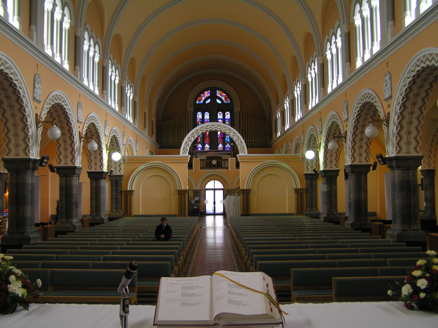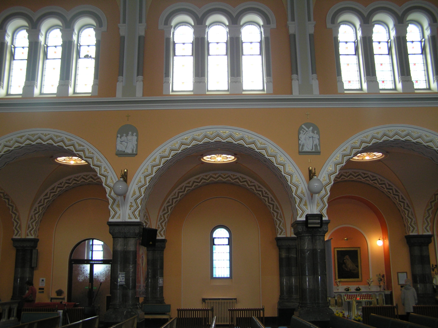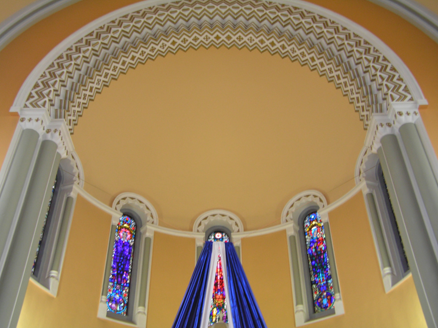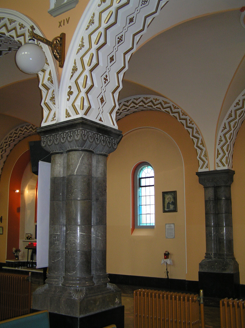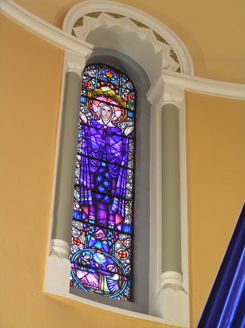Survey Data
Reg No
21518002
Rating
Regional
Categories of Special Interest
Architectural, Artistic, Historical, Social
Original Use
Church/chapel
In Use As
Church/chapel
Date
1935 - 1945
Coordinates
157604, 156967
Date Recorded
04/05/2005
Date Updated
--/--/--
Description
Attached double-height gable-fronted Hiberno-Romanesque street-fronted west-facing church, built between 1938-42, with square-plan tower to north. Rectangular-plan church with a pitched and sprocketed natural slate roof, with limestone coping to both gable ends and a stone Celtic cross to both apexes, semi-conical roof to rear apse with natural slate and lead flashing. Both side aisles have flat roofs hidden behind a parapet wall. Tooled and squared ashlar limestone wall to front elevation, cement render to rear and side elevations. Crenellated parapet walls to the tower with stringcourse to base. Gabled-fronted elevation has a large Romanesque arched window opening with rough-tooled limestone voussoirs. Chevron detail with foliate carvings and an outer pelleted surround. Arch is supported by a pair of colonnettes to each side with cushioned capitals. A large stone transom and mullion in the form of a Celtic cross occupies the opening with a pair of slender round-arched openings to either side with clustered colonettes and cushioned capitals. Openings are glazed with elaborate stained glass windows from the Harry Clarke studio. Arch details repeated at ground level to a tripartite entrance arrangement and again to a former entrance to the tower at ground level. Double-leaf recessed and chamfered multiple-panelled timber doors with glazed overlight to each opening with three granite steps, flanked by a granite block supporting four tapered fluted cast-iron lamp standards. To the tower a slender window opening at second stage repeats the arch detail with a colonette to either side and leaded light window. To the upper stage is a tripartite opening with a simpler chevron type motif to each opening supported by six colonettes and with a mesh covering. This pattern is repeated on all four sides of tower. Central double-height barrel-vaulted nave with groin-vaulted single-height side aisles divided by Romanesque arcades with chevron decoration and supported by a cluster of four short Connemara marble columns with cushioned capitals and black marble faced plinth blocks, repeated on the outer walls of the aisles with engaged pairs of identical columns. Semi-circular half-domed apse to the east has a stepped Romanesque arch with a heavy chevron motif, supported by four colonettes with cushioned capitals, with a similar treatment to five slender windows openings flanked by single colonettes with windows from the Harry Clarke studio. Principal window to the west is also by the studio with decorative plat-archivolt supported by long colonettes with the organ gallery in front. Tripartite window openings to the triforium have a plainer Romanesque treatment and sit on a running moulded cornice. Inscribed seventeen-century stone to north of façade reads '1633 HIS', with an adjoining stone which reads 'The adjoining stone is part of a lintel from our first chapel in Limerick city founded near Fish Lane 1633 after the suppression of our monastery at Adare.'
Appraisal
A very ambitious exercise in Hiberno-Romanesque Revival architecture built later than would be expected for this style. The architectural firm of Jones and Kelly were responsible for the design between 1938-39, the builders were G.S. Wallace and Son, Dublin and the cost was £49,000. While the scale may be considered too large for this particular style, the detailing and variation remains quite restrained. The building, nevertheless, has a strong street presence and is one of Limerick's landmark buildings. Saint Augustine's Church contains an extensive and valuable collection of stained glass windows from the Harry Clarke Studio. Through the incorporation of the earlier foundation stone, it forms a link with the historical presence of the Augustinians in Co. Limerick.
